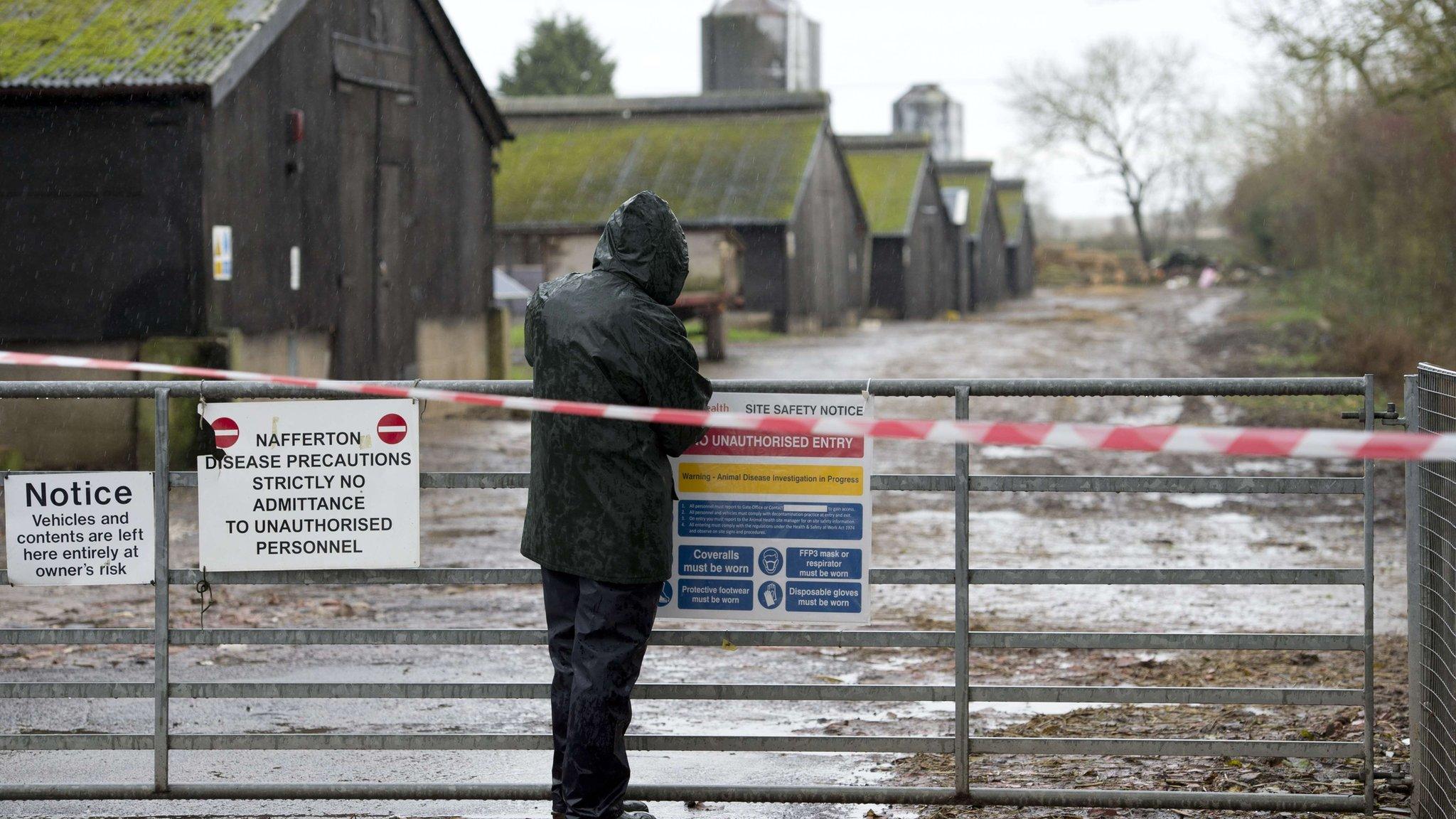Bird flu strain on UK farm identified as H5N8
- Published
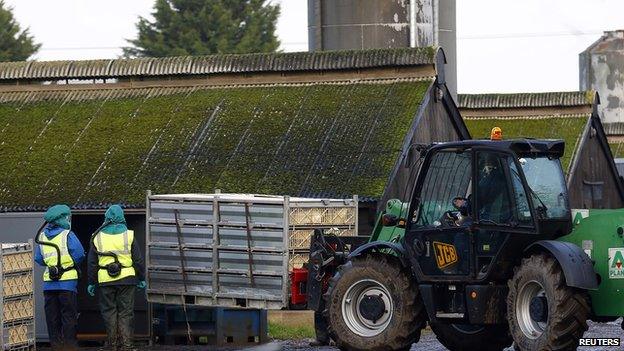
The East Yorkshire outbreak is the first serious case of bird flu in the UK since 2008
The strain of bird flu found on a duck breeding farm in East Yorkshire has been identified as H5N8, the same type seen in recent outbreaks in Europe.
The Department for Environment, Food and Rural Affairs (Defra) said the risk to public health remained very low.
The strain is very dangerous for bird life and could potentially affect humans, although only through very close contact with the affected birds.
Some 6,000 ducks are being culled at the farm in Nafferton, near Driffield.
A Defra spokeswoman said: "The cull to prevent the spread of potential infection is being carried out in a safe and humane manner by fully-trained staff.
"Our response to this outbreak follows tried and tested procedures for dealing with avian flu outbreaks and we expect the cull to be completed later today.
"Additionally, our animal health laboratory at Weybridge has confirmed that the outbreak of avian influenza in East Yorkshire is the H5N8 strain.
"The advice from the chief medical officer and Public Health England remains that the risk to public health is very low. The Food Standards Agency have said there is no food safety risk for consumers."
EU officials have said migratory birds heading south for winter are probably responsible for the Yorkshire bird flu case and the recent outbreaks in the Netherlands and Germany.
Exclusion zone
The East Yorkshire outbreak is the first serious case of bird flu in the UK since 2008, when the H7N7 strand was found in free-range hens near Banbury, Oxfordshire.
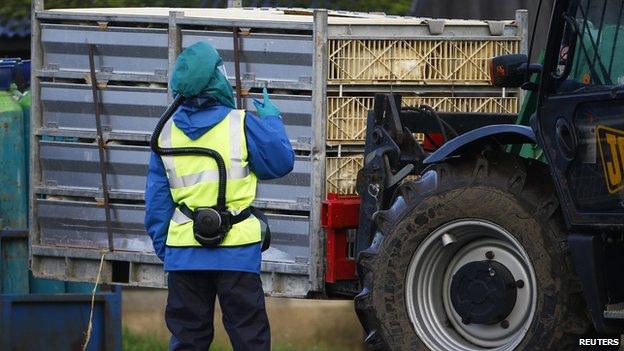
Officials have been keen to stress that the strain found at the Yorkshire farm is not the H5N1 form which is deadly to humans.
There is a 3km (two mile) protection zone and 10km (6 mile) surveillance zone around the farm, which is owned by the UK's largest producer of duck products, Cherry Valley.
The exclusion zone bans movements of all poultry, products and waste within the area.
Paul Bellotti, from East Riding of Yorkshire Council, said council officers have been out and about, visiting farms and reassuring the public.
"By the close of play today, every registered poultry farm will be visited within the protection zone and surveillance zone, as well as other smaller non-registered poultry and bird-keeping premises that we became aware of during the course of the day," he said.
"The council would like to once again state that the risk to public health is very low and would also like to reassure residents that poultry and eggs are safe to purchase and eat, subject to normal food preparation.
"Motorists and the travelling public should continue to use any and all routes on the highways network, unless they are advised otherwise, and, unless specifically closed, public footpaths remain open."
UK chief veterinary officer Nigel Gibbens said the Yorkshire farm had good bio-security in place, and as a result the risk of spread was "probably quite low".
But he warned more cases could follow and, because of the risk of wild birds spreading the disease via their droppings, urged farmers and their vets all over the country to be alert to the possibility of disease.
Most types of bird flu are harmless to humans but two types - H5N1 and H7N9 - have caused serious concerns. However, there has never been a case of human bird flu in northern Europe.
- Published18 November 2014

- Published17 November 2014
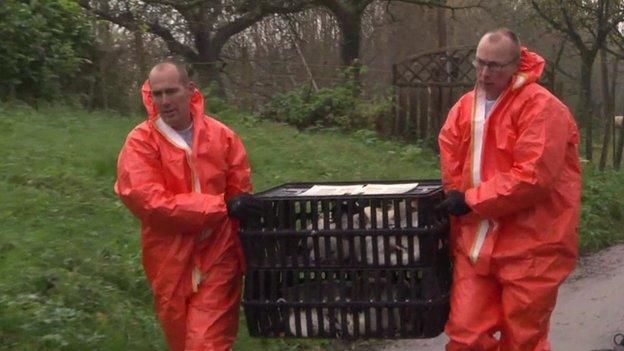
- Published17 November 2014
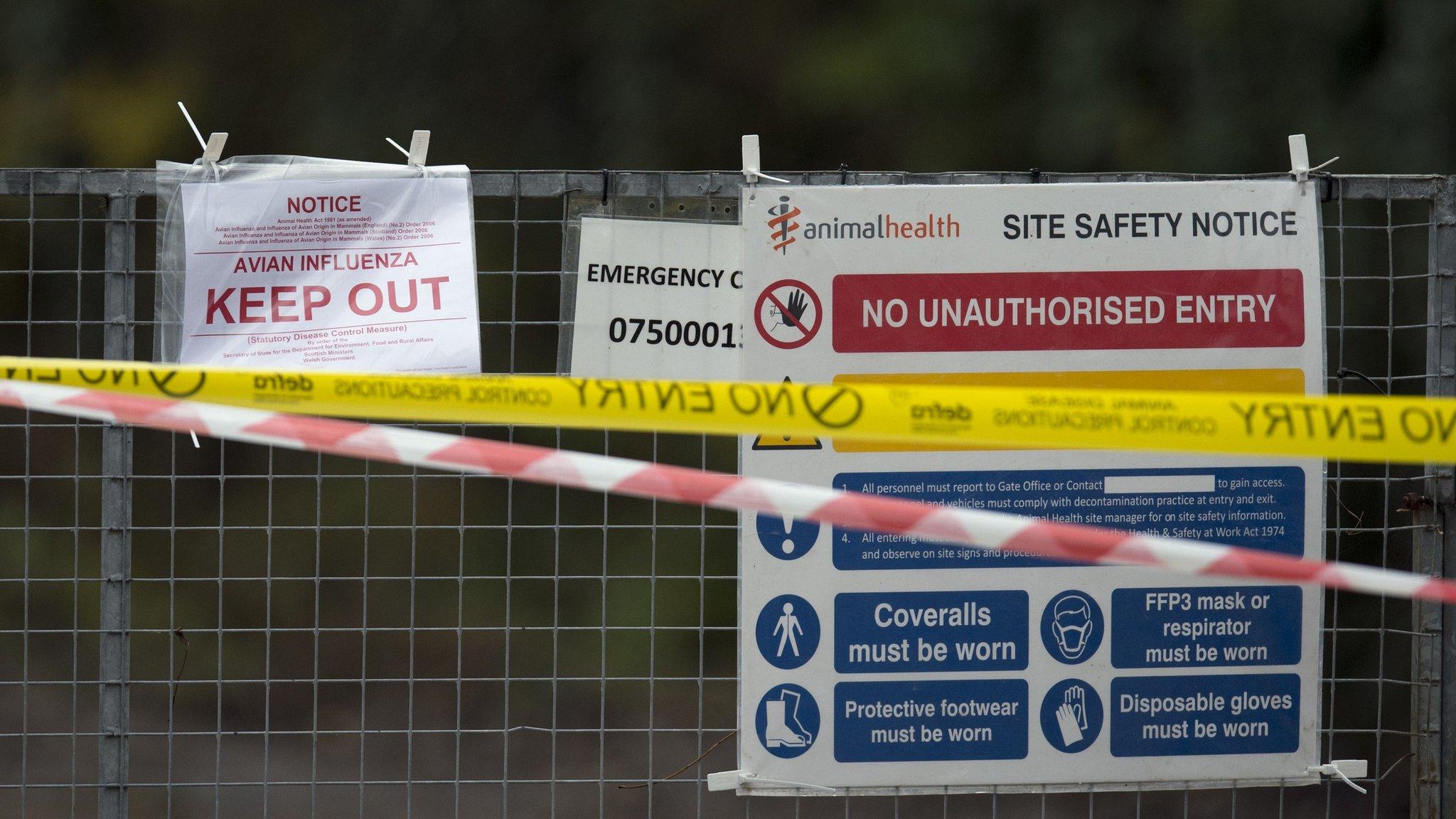
- Published17 November 2014
